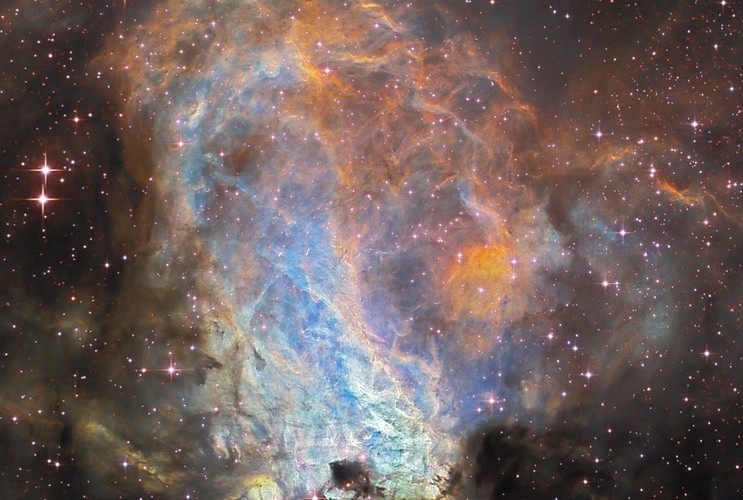
The stunning region seen here is known by many names — including Messier 17 (M17), the Swan Nebula, the Checkmark Nebula, or the Horseshoe Nebula — but perhaps the “Omega nebula” is the most memorable.

This tremendously large region, which can be found about 5,000 light-years away from Earth in the Sagittarius constellation, is a small part of a large molecular cloud that spans at least 40 light-years across.
Spread throughout this appreciable region is more than 30,000 solar masses of material (like gas and dust). Much of that material still permeates the interstellar medium, but some of it is now locked up in a plethora of massive and hot, blue-white stars (with some belonging to an open cluster of 35 youngish stars). These stars now give life to the nebula by bombarding the surrounding gas with ultraviolet radiation, which strips atoms of their electrons. When they rejoin, they give off a brilliant glow, an effect called ionization

Astronomers estimate that the region’s focal point (the Omega nebula) extends about half way across the length of the nebula, or about 15 to 20 light-years in diameter (one light-year alone is equal to 5,878,000,000,000 miles or 9,461,000,000,000 km), yet it only contains about 800 solar masses of material.
See translation in french here.